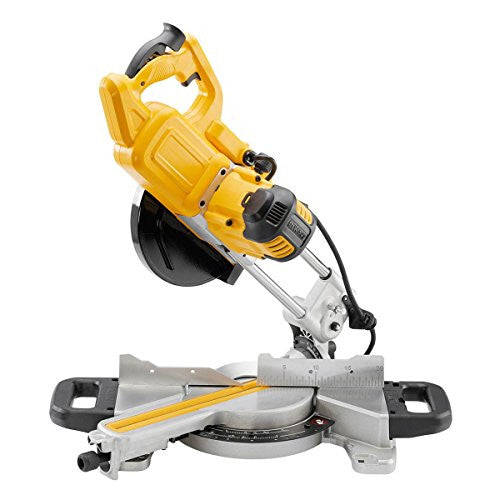-
Electric cutting table Rubi DU-200 EVO 650 230V
Vendor:RUBIRegular price 10.415,00 KčRegular priceUnit price per11.805,00 KčSale price 10.415,00 KčSale -
Rubi DCX-250 XPERT 1250 electric cutting table
Vendor:RUBIRegular price 59.821,00 KčRegular priceUnit price per76.763,00 KčSale price 59.821,00 KčSale -
Rubi DC-250 1200 PYTHON Electric Cutting Table
Vendor:RUBIRegular price 36.361,00 KčRegular priceUnit price per43.525,00 KčSale price 36.361,00 KčSale -
Electric Cutting Table DU-200 EVO 850 230V Rubi
Vendor:RUBIRegular price 13.906,00 KčRegular priceUnit price per16.499,00 KčSale price 13.906,00 KčSale -
Dewalt 1400W Telescopic Miter Saw Ø216mm + XPS DWS774
Vendor:DEWALTRegular price 9.955,00 KčRegular priceUnit price per10.519,00 KčSale price 9.955,00 KčSale -
Electric cutting table DR-350 230V 50Hz Rubi
Vendor:RUBIRegular price 29.592,00 KčRegular priceUnit price per39.983,00 KčSale price 29.592,00 KčSale -
Dewalt DCS365N-XJ telescopic miter saw - 18 V XR ø184 mm
Vendor:DEWALTRegular price 13.297,00 KčRegular priceUnit price per13.282,00 KčSale price 13.297,00 Kč -
Rubi DC-250 1200 PYTHON Electric Cutting Table Kit with cable and accessories
Vendor:RUBIRegular price 34.802,00 KčRegular priceUnit price per70.996,00 KčSale price 34.802,00 KčSale
At Brikum, we know that a perfect finish starts with an impeccable cut. That's why we offer a selection of cutting tables designed for those who value precision, safety, and efficiency. From professional woodworking workshops to home DIY projects, a good wood cutting table makes all the difference.
What is a cutting table and what is it used for?
A cutting table is a structure that integrates a fixed circular saw or a disc saw to make straight, clean, and repeatable cuts in different materials. Although tables are available for cutting metal or plastics, the wood cutting table is undoubtedly the most popular.
The cutting table is indispensable in carpentry, construction, and DIY, as it allows for precise work on boards, slats, and panels of various thicknesses and sizes.
Advantages of using a wood cutting table
- Precise and consistent cuts: The design of the wood cutting table allows you to always work at the same angle and depth, eliminating errors.
- Greater security: Integrated guide systems, side stops, and guards on the cutting tables reduce the risk of accidents.
- Speed and efficiency: By automating part of the process, greater speed is achieved without sacrificing cut quality.
- Less physical effort: Since the material is supported on the cutting table surface, it is not necessary to hold it manually or exert as much force.
Key features that a good cutting table should have
When choosing a cutting table, it is important to consider the following aspects:
- Engine power: Essential if you are going to cut hardwoods or in large volumes.
- Cutting disc: Make sure it fits your needs, both in diameter and saw type.
- Dust extraction system: Essential to keep the work area clean and prevent waste accumulation.
- Height and tilt adjustment: Allows easy beveled cuts.
- Base stability: A good wood cutting table should have a solid structure and non-slip legs.
Wood cutting table
Whether you're assembling a shelving unit at home or building a wood structure from scratch, a wood cutting table gives you the control and efficiency you need to work like a pro. The most advanced wood cutting table models include soft-start systems, overload protection, and an electric brake, ensuring a safer working environment.
Additionally, many wood cutting tables are designed to be foldable or portable, making them easy to use in different spaces, even if you have a small workshop.
Choose the right cutting table
At Brikum, we offer woodworking tables to suit every user's needs. From compact options for hobbyists to more robust cutting tables for professional use, we have a selection that guarantees quality and performance.
When choosing a woodworking table, it's important to consider the type of work you'll be doing, the space available, and the table's features, such as its adjustability and tool power. Trust Brikum to advise you on your selection and improve the precision and quality of your woodworking projects.
Maintenance tips for your cutting table
- Regular cleaning: Remove sawdust and dust from your cutting table after each use.
- Greasing moving parts: Keep your wood cutting table's guides and mechanisms well lubricated to ensure smooth movement.
- Checking the blade: Replace the blade when it begins to dull or makes uneven cuts.
- Check stability: Adjust the legs and fasteners to avoid vibrations during work.
Buy your wood cutting table at Brikum
Whatever your project, a wood cutting table is a sure investment in quality, comfort, and precision. At Brikum, we carefully select each wood cutting table, provide expert advice, and always offer the best value.
Don't improvise with your cuts. Find the cutting table your workshop needs at Brikum and take the leap toward more professional work.
















